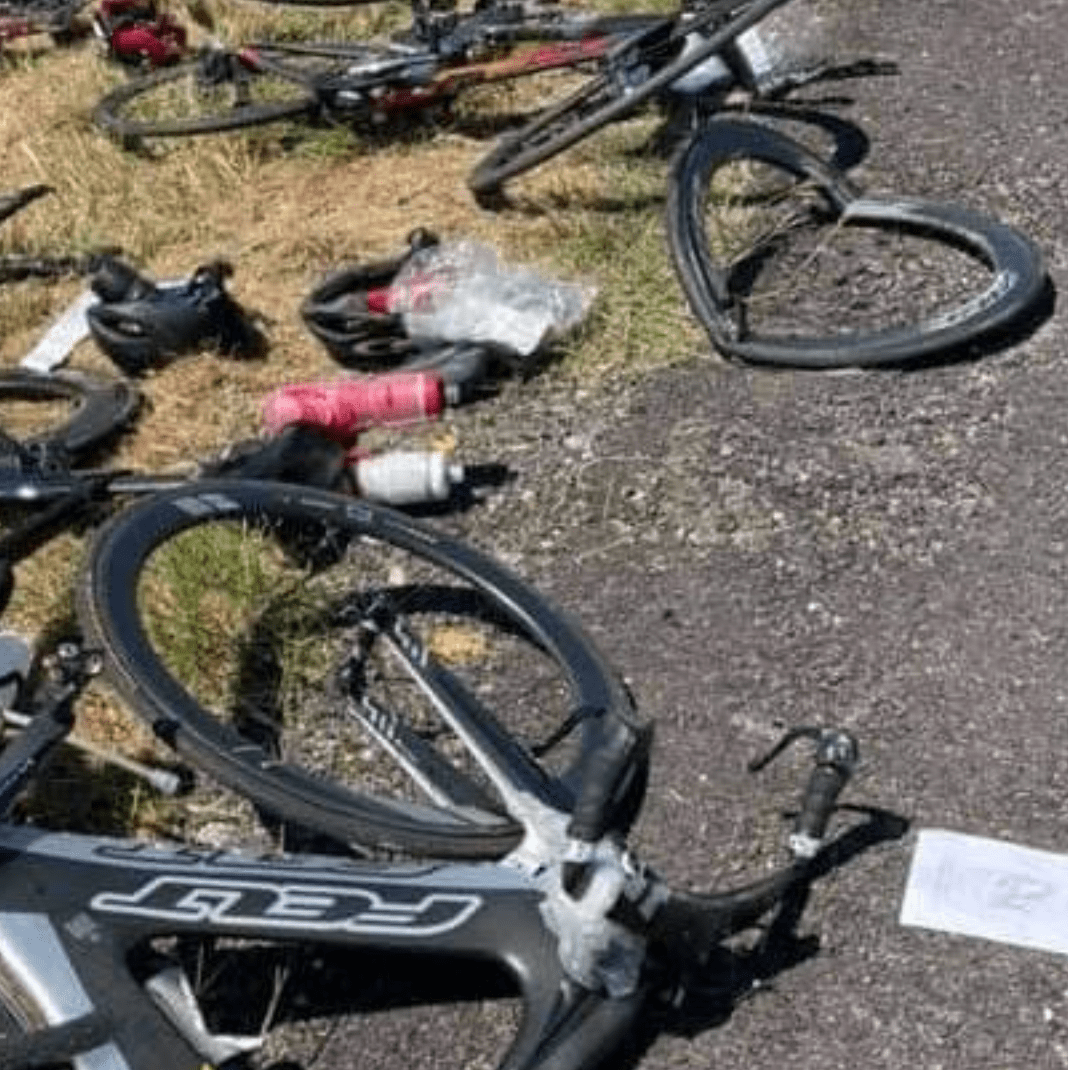Safe streets advocates in Texas are questioning the state driving age after an aggressive teenage motorist mowed down six cyclists this weekend — and some are wondering whether children really belong behind the wheel anywhere in America.
On Saturday, a group of triathletes was out on a training ride in rural Waller County outside Houston when an unidentified motorist in a black Ford pick-up approached part of the peloton and began blowing an excessive amount of diesel exhaust into their path — a maneuver known as "rolling coal" which usually requires an expensive and illegal vehicle modification of the vehicle (see it below):
Witnesses say the driver then accelerated to pass the cyclists, striking six riders in the process.
"[The driver of] this truck swerved over into my lane and got within feet of me to accelerate to blow exhaust on me," Chase Ferrell, who was riding with the struck cyclists, told one local media outlet. "The reason why he couldn't stop [before he struck the other members of the group] was because he was actually accelerating to blow more fuel exhaust onto these cyclists. He ended up hitting three people before his brakes even started."
Unlike last year's eerily similar Nevada crash, there were no fatalities this time. But several of the riders' injuries were severe: four required transport to the hospital by ambulance, and two were life-flighted by helicopter. Pick-up trucks are among the vehicle designs most likely to be fatal or seriously injurious to vulnerable road users in the event of a collision.
The specific location of the crash has not been made available, but the Houston Chronicle noted that the road on which it occurred — US-290 Business, which has no bike lanes and is signed at 55 miles per hour along much of its length, according to maps — is a popular training site for Houston-area athletes, thanks to its largely flat terrain with few intersections and little cross-traffic.
"There's an attitude in Waller County that bicyclists don't belong, even though it's a place that sees lots of bike traffic on the weekends," said Joe Cutrufo, executive director of BikeHouston. "Until this driver faces consequences for his actions, drivers will be emboldened to harass and attack people simply for riding bikes."
The name of the driver has not been released, though police did confirm that he was a 16-year-old male, and as of Sunday, had not yet been arrested or charged. A GoFundMe is collecting donations for the victims' medical expenses, and Bike Law National’s founding attorney has announced that he will represent all six in any future legal proceedings.

The Texas driver is far from the first teen alleged to be responsible for a horrific roadway crime.
In a similar incident earlier this month, a 15-year-old girl in Maple Valley, Wash. grabbed national headlines when she surrendered herself to police for the brutal murder of jogger Greg Moore, 56; she'd confessed to a friend that she had intentionally struck Moore with a stolen Toyota Camry "to scare him." The motorist since has been implicated in separate hit-and-run incident that injured another pedestrian a day or so before, and is being prosecuted as minor against the Moore family's wishes.
But statistically, even teenagers who don't commit aggravated vehicular manslaughter are still more likely to kill than their adult counterparts. Earlier this year, the Governors Highway Safety Association found that motorists between the ages of 16 and 19 were the demographic most likely to kill a cyclist or pedestrian, and that teen drivers had an overall per-mile crash rate four times higher than drivers over 20. Experts blame that gap on a toxic combination of inexperience and the fact that the regions of the human brain associated with impulse control, decision making and judgement aren't fully formed until the early to mid-20s.
That's part of why most countries set minimum driving ages at 18 or higher, and why advocates across America have long pushed at least for graduated licensing requirements that limit when and under what circumstances an inexperienced motorist can take to the road, or requires that their parents or guardians supervise them closely until they're a legal adult.
Until the U.S. gives its adolescents more safe, affordable ways to get around without a car — an option many of them badly want — half-measures like tweaks to state licensing rules may be the best we can do for now.






